
Home » History of the German Spitz
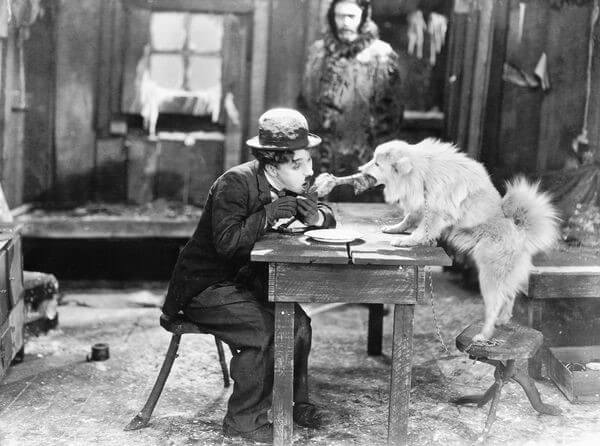
The Spitz is the oldest breed of dog in Central Europe and has served as the progenitor of many European breeds. Well-preserved specimens of Stone Age “Peat Dogs,” known as the “Torfhund” (Canis familiaris palustris Rüthimeyer), dating back 6,000 years have been found in the Netherlands, Germany, Denmark, England, and Ireland that closely resemble modern European Spitz dogs.
The term “Spitz” is derived from the Old Dutch language and literally translates as “pointed peaks,” referring explicitly to the image of snowcapped mountain peaks that span the northern European and sub-Arctic regions. The pointed ears and wedge-shaped muzzle of the Spitz looked like the triangular and fuzzy appearance of the snow-swept peaks. Even now, the Germans refer to them as “tips” or “peaks”.
During the Viking era, circa 800–1100 AD, Norsemen from Denmark, Sweden, and Norway built superior ships and engraved their mark in history as ravenous explorers and warriors. The Vikings are famous for their conquests of coastal and river towns throughout Europe, but they also established colonies, engaged in trade, and fortified the military and naval strength of their regions. They brought the basic elements of their culture with them, most significantly introducing a small furry dog with a curly tail and foxy face to the heart of continental Europe.
There is a tale from some thousand years ago of a Viking ship that foundered off the coast of Friesland (the Netherlands). The crew perished except for one man, saved by a local fisherman in his cog (the style of fishing boat) with his dog. The two men and the little white dog were caught in the storm and forced southward until they eventually managed to land on a small area of higher ground. They built a small chapel at the site to give thanks for their deliverance. This is the place where Amsterdam slowly grew to become an important town.
The Great Seal of Amsterdam illustrates this event, and you can see the little dog peering over the side of the boat. This stamp is now in the library of Yale University, New Haven, CT. In 1790, an unknown writer in the Netherlands wrote the first book about the large white Keeshond, “Cases of a Keeshond in the Netherlands”.
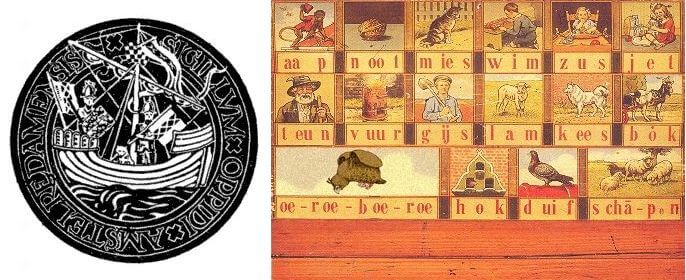
The German Spitz was primarily a watchdog, selected for a lack of hunting drive and for territorial behavior so that he does not leave the territory assigned to him and, if necessary, also defends it. The lack of hunting behavior of the German top played an important role in the Middle Ages. At that time, the nobles attached particular importance to preserving their game. The hunting-capable dogs of the farmers were usually destroyed.
In many cases, the feudal lords decided to give the smaller peasants and cows a German Spitz because he did not hunt large animals, only vermin. A good watchdog must be willing to submit to his master, of course, but in the absence of his master, he can make independent decisions in his own interest. This led to the Spitz being attached to his home but also self-confident and sometimes obstinate. Intruders are immediately reported loudly and usually held until the dog owner arrives and decides how to proceed. From: Economic Encyclopedia, JG Krünitz (published: 1773-1858).
In earlier times, burglars and thieves on the farms were by no means just humans but also rats, mice, weasels, foxes, as well as stray dogs and cats. Therefore, the Spitz is not fundamentally friendly to other dogs or uninvited strangers. The upright ears and bushy tail curled high on the back of the Spitz usually signals to foreign dogs and people that they are dealing with a confident, dominant dog.
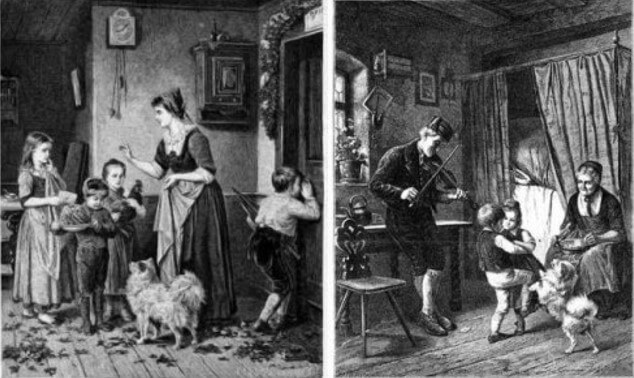
While the color of the small spitz had no special meaning, the gross spitz had different areas of distribution and characteristics depending on the color, not because certain properties are genetically linked to the color but because of the different uses of the dogs. The white gross Spitz was mainly found in northern and central Germany. He was a typical guardian of the farm and was used for herding sheep (Pommer’scher Hütespitz). The white color is of particular importance to a herding dog because it is so easy to distinguish it from the wolf over long distances and in the dark.
The black spitz were especially widespread in the southern German wine-growing regions. During the day, they guarded the yard, and at night, they were sent to the vineyards. This is why the black spitz was once often referred to as vineyard or vine spitz and guarded the vineyards from vermin and animals such as the wild boar. A large dog was considered to be at a disadvantage because of its own mass compared to a smaller, more nimble, and agile dog that could move quickly through the vines. The thick black coat provided protection as well as hiding him from his prey. The black Großspitz is probably the most dashing because of his work in the vineyards. As he was especially bred around Mannheim, he was also called “Mannheimer Spitz”.
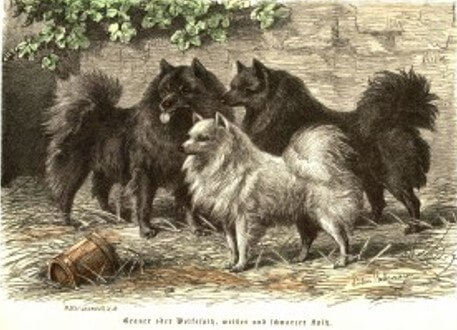
The brown Spitz was also common in southern Germany. He was considered extinct for a long time. However, there are now breeding brown and black Großspitz. In 2011, the first brown Großspitz was bred by backcrossing from the black spitz.
These days, the German Spitz is primarily a companion and watchdog, and its vermin control is restricted to activities such as barn hunting. The smaller sizes are now more prevalent due to the two World Wars and the resulting urbanization.
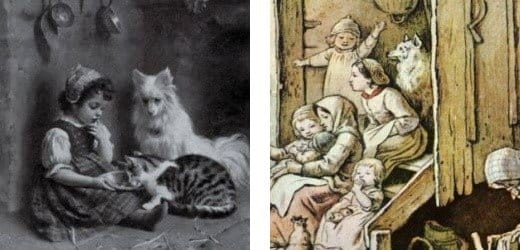
The Association for German Lace was founded in 1899. Only the colors white, black, and wolf-grey were recognized. Although the white spitz were usually only paired with each other, they crossed every few generations with a black spitz to strengthen the pigmentation.
Today, the German Spitz is found throughout the world primarily as a companion and is well suited to almost any situation due to the variety of sizes and colors. His extraordinary curiosity and docility, as well as his confident demeanor, are well known in performance sports as well as in the circus ring, especially in the small traveling circus.
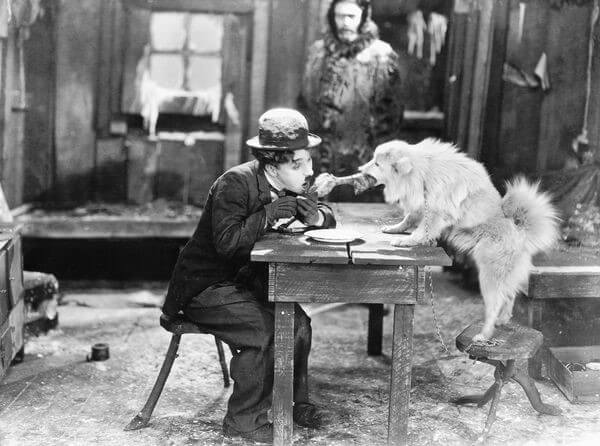
There are numerous stories of their exploits, immortalized in the 1925 Charlie Chaplin movie “The Gold Rush” and still seen today in the circus ring, such as this fabulous white gross spitz who performs with the Sirkus Finlandi.
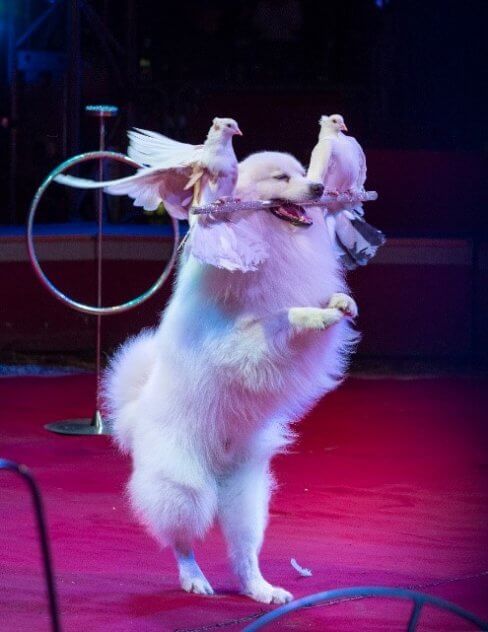
History of the German Spitz
Article by: Patrea Pabst
